A 500 Internal Server Error isn’t always caused by WordPress itself; it can stem from various server-related issues. This guide explores the common reasons behind WordPress's 500 Internal Server Error and how to fix them.
Before making any modifications to your website, it's highly recommended to create a backup. This ensures you can restore a previous version if anything goes wrong.
Is your WordPress site displaying a Critical Error? Check out this guide for troubleshooting: How to Fix the Critical Error on Your WordPress Website.
Fixing a Corrupted .htaccess File
If your .htaccess file is corrupted, creating a new one may resolve the issue. Follow these steps to fix it:
Using cPanel:
STEP 1: Log in to cPanel.
There are three methods to log into your cPanel.
- Method 1: Log in to your cPanel directly.
- Method 2: Log in to your cPanel through your Customer Portal.
Through your Customer Portal;
- Log in to your Customer Portal.
- Click on "Log in to cPanel".
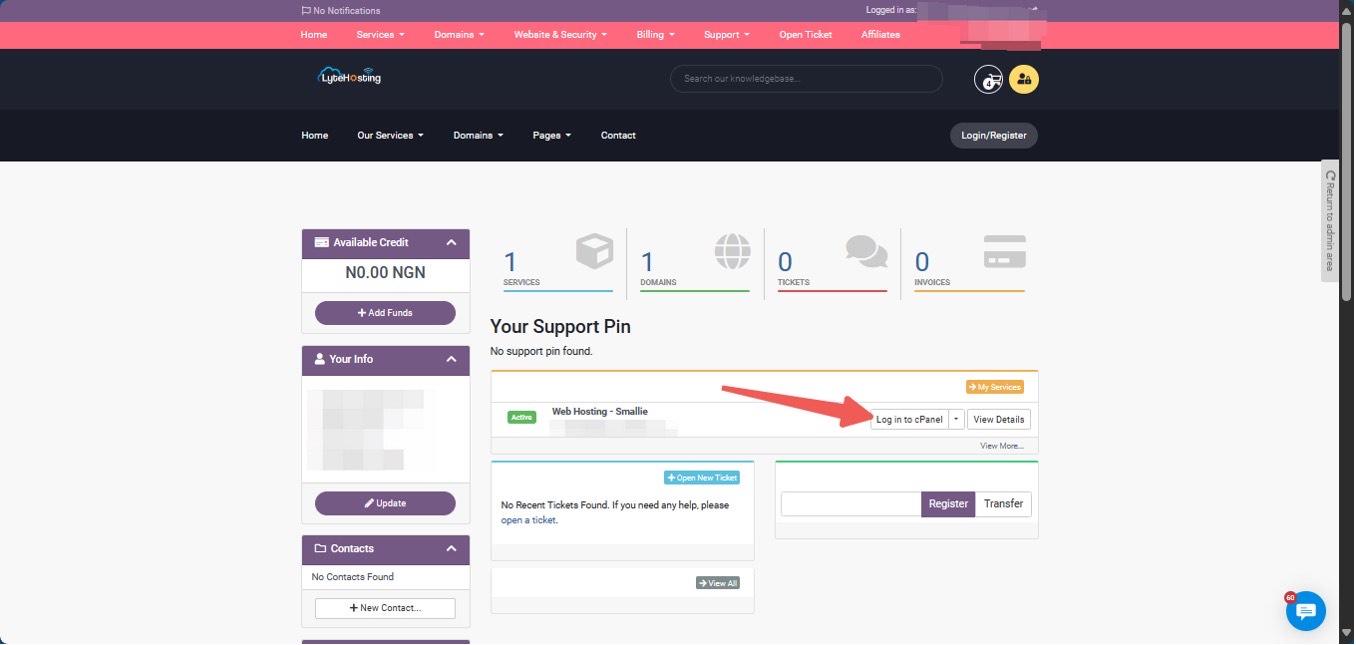
- Method 3: Log in using the details sent to your Email.
Through your Email;
- When you purchase a hosting plan, your cPanel login details (including username, password, and cPanel URL) are automatically sent to your registered email address. Simply check your inbox (or spam folder), locate the email, and use the provided credentials to access your cPanel.

STEP 2: Locate the Files section and click on File Manager.

STEP 3: Click on the Settings box located in the upper-right corner.
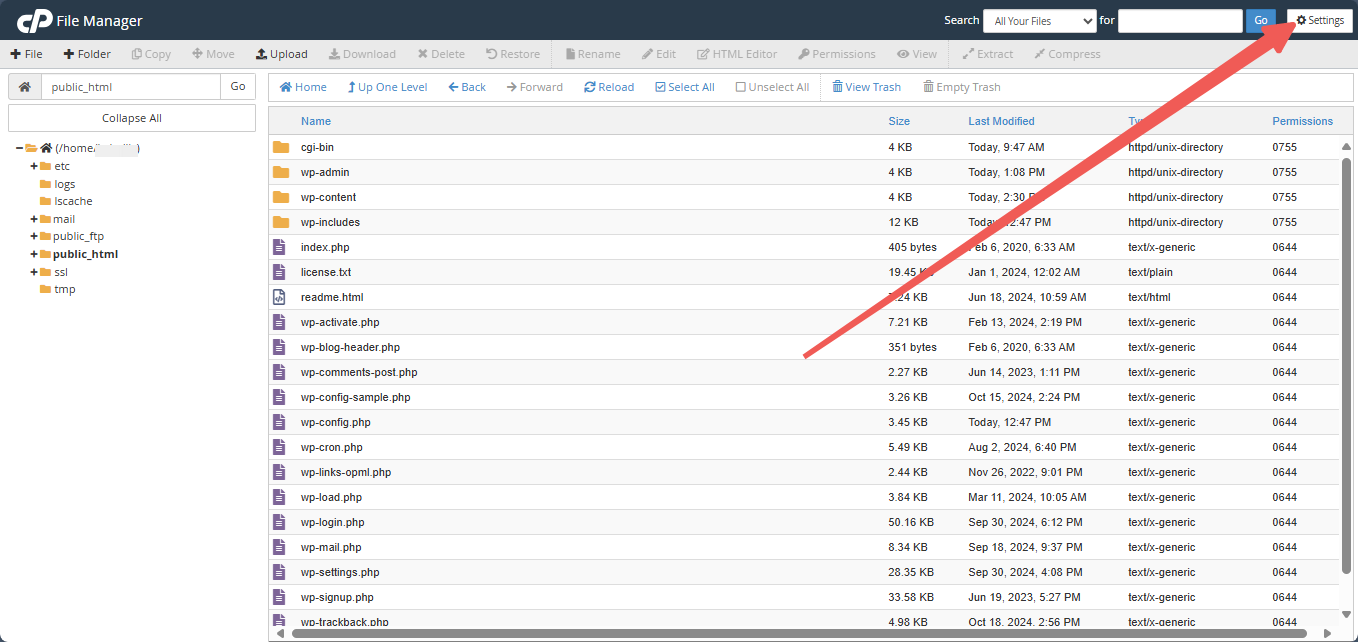
STEP 4: Select Document Root, then choose the domain you want to access from the dropdown menu.
STEP 5: Ensure that Show Hidden Files (dotfiles) is enabled.
STEP 6: Click Save to open the File Manager in a new tab or window.
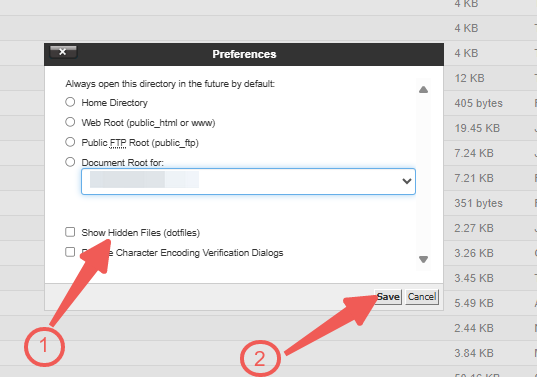
STEP 7: Locate the .htaccess file in the list. You may need to scroll down to find it. Right-click the .htaccess file and select Rename.
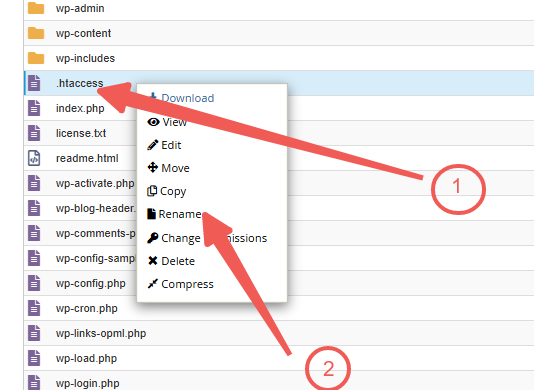
STEP 8: Change its name and click on Rename File.

Updating Permalinks in WordPress
STEP 1: From the WordPress Dashboard, go to Settings > Permalinks.
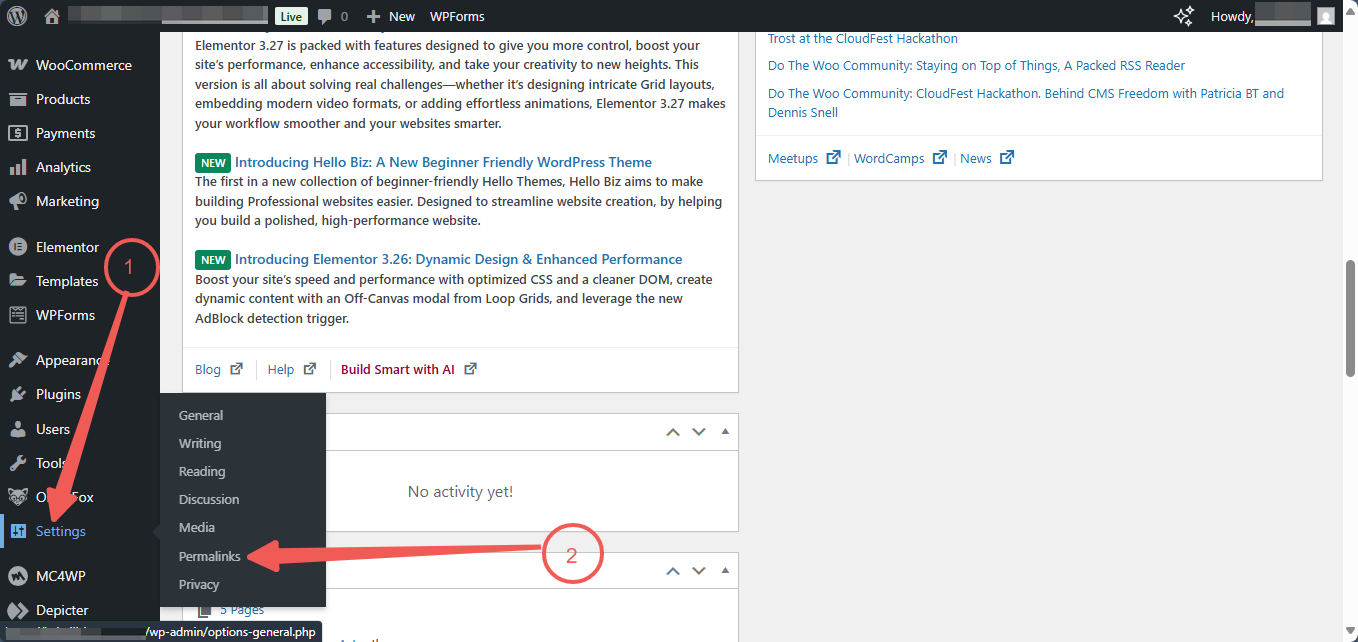
STEP 2: Verify that the settings are correctly configured.
STEP 3: Click on Save Changes.
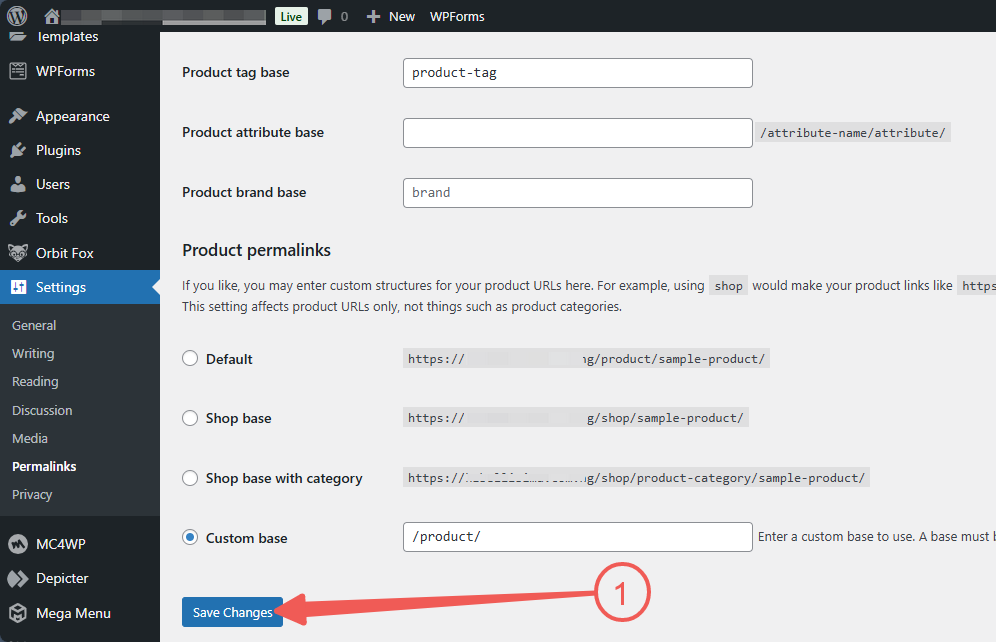
STEP 4: Refresh your website to check if the 500 Internal Server Error is resolved.
Still Experiencing a 500 Internal Server Error?
1. Increase PHP Memory Limit: If the issue persists, consider increasing the PHP memory limit. You can check out this guide for detailed steps on fixing the PHP Memory Limit Error.
2. Deactivate and Reactivate Plugins: If raising the PHP memory limit doesn’t fix the error, a conflicting plugin might be the cause. Sometimes, installing a new theme can make an existing plugin incompatible, leading to the 500 Internal Server Error.
Using cPanel:
STEP 1: Log in to cPanel.
There are three methods to log into your cPanel.
- Method 1: Log in to your cPanel directly.
- Method 2: Log in to your cPanel through your Customer Portal.
Through your Customer Portal;
- Log in to your Customer Portal.
- Click on "Log in to cPanel".

- Method 3: Log in using the details sent to your Email.
Through your Email;
- When you purchase a hosting plan, your cPanel login details (including username, password, and cPanel URL) are automatically sent to your registered email address. Simply check your inbox (or spam folder), locate the email, and use the provided credentials to access your cPanel.

STEP 2: Locate the Files section and click on File Manager.

STEP 3: Select Web Root (public_html/www) and the Document Root for the domain where WordPress is installed, then click Save.

STEP 4: Expand the public_html folder and navigate to the /wp-content directory.
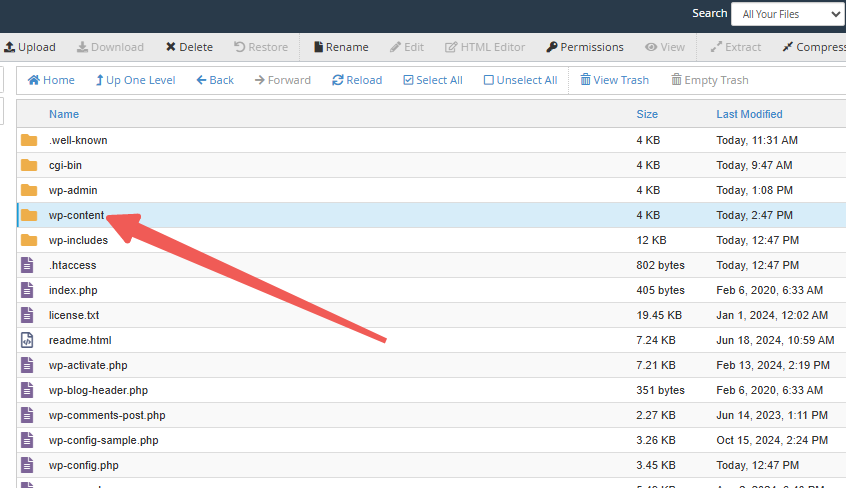
STEP 5: Right-click on the /wp-content/plugins folder and rename it to plugins.old. This will likely deactivate all plugins and temporarily restrict access to the WordPress admin area. However, you can still manage this through File Manager.
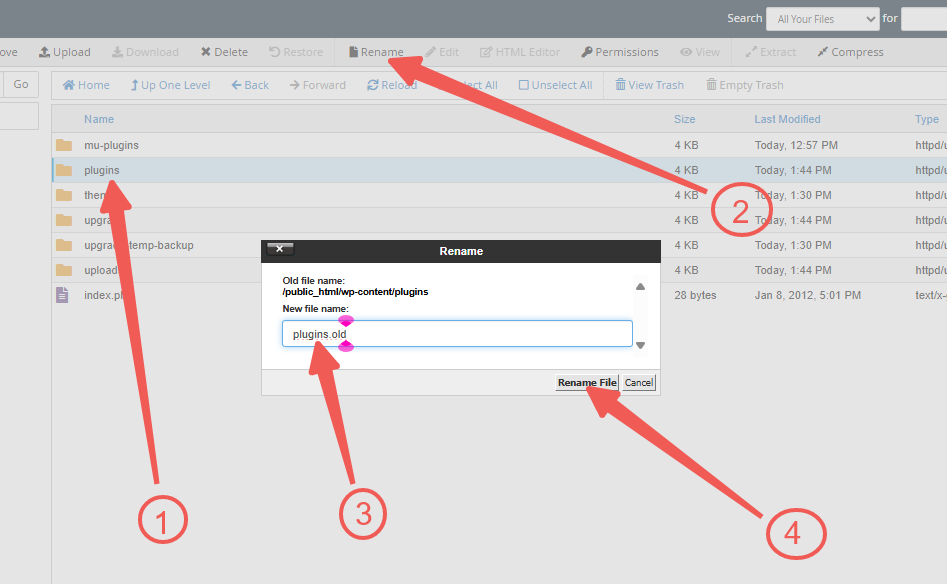
Reactivating Plugins from the WordPress Dashboard
To reactivate the plugins folder, follow the same steps and rename it back to plugins. Enable each plugin one at a time and refresh your site after each activation to check if the issue is resolved, this helps to identify the one causing the 500 Internal Server Error. Once resolved, access to the WordPress Dashboard should be restored.
Note:
A 500 Internal Server Error isn’t always caused by WordPress. It can also be triggered by server-related issues. This guide covers the most common causes of the error and how to troubleshoot them.
Before making any modifications to your website, create a backup to ensure you can restore a previous version if needed.




